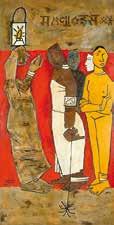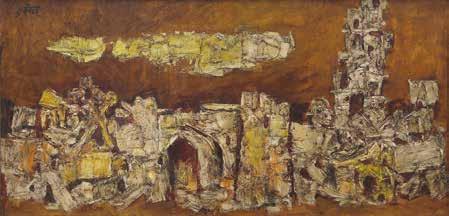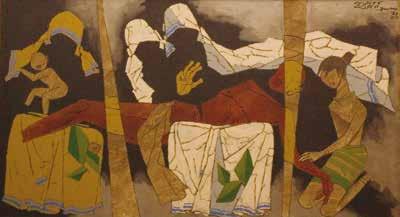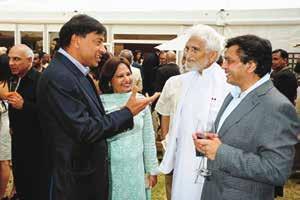M. F. Husain
Artist timeline Artworks
DAG exhibitions Notable collections
|
1913 - 2011 M. F. Husain |







'Painting is prayer for me. When I am painting, I switch off from the rest of the world—that is what prayer is meant to do’
M. F. HUSAIN
artist timeline
artworks
dag exhibitions
|
‘Continuum: Progressive Artists’ Group’ |
|
DAG, New Delhi, 2011 |
|
The ‘Manifestations’ series of 20th Century Indian Art, Editions V, VI, VII, VIII, IX, X, XI |
|
DAG, New Delhi and Mumbai, 2011-14 |
|
‘The Printed Picture: Four Centuries of Indian Printmaking’ |
|
DAG, New Delhi, 2012; Mumbai, 2016; alternate locations in Kolkata, 2013; Jaipur, 2017; Chandigarh, 2018 |
|
‘Indian Landscapes: The Changing Horizon’ |
|
DAG, New Delhi, 2012 |
|
‘Mumbai Modern: Progressive Artists’ Group 1947-2013’ |
|
DAG, Mumbai, 2013 |
|
‘Indian Divine: Gods & Goddesses in 19th and 20th Century Modern Art’ |
|
DAG, New Delhi and Mumbai, 2014 |
|
‘Indian Abstracts: An Absence of Form’ |
|
DAG, New Delhi, Mumbai, New York, 2014-15 |
|
‘Indian Portraits: The Face of a People' |
|
DAG, New Delhi, 2013; Mumbai, 2014 |
|
‘India Modern: Narratives from 20th Century Indian Art’ |
|
DAG, New York, New Delhi, Mumbai, 2015; Chandigarh, 2017 |
|
‘The Naked and The Nude: The Body in Indian Modern Art’ |
|
DAG, New Delhi, 2013; Mumbai, 2015 |
|
‘Primitivism and Modern Indian Art’ |
|
DAG, Mumbai, 2019, New York, 2020; New Delhi, 2021-22 |
|
‘Navrasa: The Nine Emotions of Art’ |
|
DAG, Mumbai and New Delhi, 2020 |
|
‘Ways of Seeing: Women Artists | Women as Muse’ |
|
DAG, New Delhi, 2021 |
|
‘Indian Blue: From Realism to Abstraction’ |
|
DAG, New Delhi, 2021 |
|
‘Iconic Masterpieces of Indian Modern Art’ |
|
DAG, Mumbai, 2021 |
|
'Master Maqbool: Works by M. F. Husain' |
|
DAG, Mumbai, 2022-2023 |
notable collections
|
National Gallery of Modern Art, New Delhi, India |
|
Kiran Nadar Museum of Art, New Delhi |
|
Jehangir Nicholson Art Foundation, Mumbai |
|
Tata Institute of Fundamental Research Art Collection, Mumbai |
|
Piramal Art Foundation, Mumbai |
|
Government Museum and Art Gallery, Chandigarh |
|
Roopankar Museum of Fine Arts, Bharat Bhavan, Bhopal |
|
CITI India Corporate Collection |
|
State Museums, Berlin |
|
Peabody Essex Museum, Salem, Massachusetts |
|
The Art Institute of Chicago, Chicago |
|
Glenbarra Art Museum, Himeji |
|
Jane and Kito de Boer Collection, Dubai and London |
|
Stellar International Art Foundation, Switzerland |
archival media
|
17 July 1988 |
|
the Sunday Observer |



































